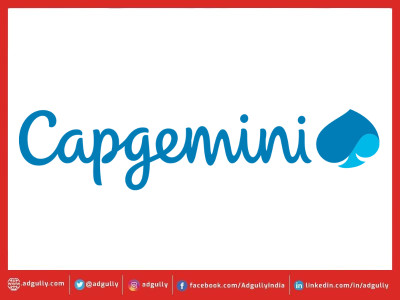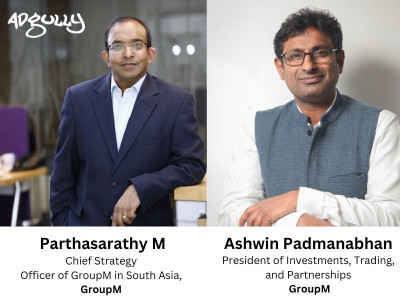The great TRP Scam: Lies, damned lies and statistics
Authored by Mahesh Murthy, Marketer, Investor and Entrepreneur.
Please note: This article first appeared in a LinkedIn blog and has been republished on Adgully with permission from the author. Disclaimer: Views expressed in this article are those of the author. They do not purport to reflect the opinions or views of Adgully.
India has been blowing up lately on the news of a few TV channels caught paying bribes to be rated high. Here's my take.
- My personal experience with the #TRPscam:
- It’s been rigged in India for at least 30 years
- Not just Republic TV but many channels benefit
- The scam value is up to Rs. 25,000 crores or US $ 3.5 billion a year
Don't blame Republic TV, but WPP that owns Mindshare, GroupM, Mediacom, Grey, Ogilvy (the last two my alma maters) Wavemaker, Wunderman JWT, Y&R, Landor, Kantar and other agencies
In the early 1990s, I lived in Hong Kong & helped MTV launch in India (the "Quickgun Murugan" times).
I then moved to the US. And I was hired from the US in 1999 to come back to India to try turn around MTV's rival Channel V (the "We Are Like This Only" times).
As we geared for the re-launch, we agonized about distribution.
Back then India didn’t have too many satellite dish households. The majority got their channels from the friendly neighbourhood cable mafioso. Most TVs then couldn’t carry 100s of channels and we desperately wanted to be on the prime or sub-prime bands so people could at least receive us.
This basically meant the top 20 or 30 ‘slots’ on the TV.
The distribution team’s job was to be nice-nice with 100s of cable mafiosi around India so they could place us on a good slot. Without a doubt, the distribution teams for TV channels were the true heroes of the business. Many of them hold the highest positions in the business around the world today. And more respect to them.
We’d lined up advertisers for the re-launch who liked our new programming (“not just a music channel but a youth channel”). But they all asked us, “What do you think your TRPs will be at?”
Of course, the better we rated, the more they could justify spending on us.
Now a TRP is a Television Rating Point. A TRP of 10 means 10% of Indians with a TV in your demographic or geography are tuned in to your channel right now. That's a huge number.
MTV and Channel V were what's called “niche channels”. We basically hoped for a TRP of 1. That was good enough for us.
In contrast, the big guys used to then show saas-bahu serials and earned TRPs of 10 or more regularly. They were the demi-gods. We were small fry.
Now MTV knew we were up to a re-launch and suddenly we saw their ratings spike. A show there even got a TRP of 10 from South Mumbai during prime time: 7 - 9 pm
This shocked us: It was an average show, how was this even possible? Did we judge the audience horribly wrong? Were we going to fail miserably?
(An aside: the head of MTV India then is a friend, and he now heads the TV ratings agency under siege, BARC, and this may just be a coincidence).
In one of our meetings our distribution guy piped up – “Boss, why do you worry? You tell me what ratings you want, I’ll get it for you. Don’t worry, we’ll beat MTV.”
These didn’t sound like empty consoling words. I took him aside and badgered him: WTF do you mean?
He basically said – just clear an extra Rs. 2 lakhs a month (US$ 4,000 then), and I'll get you the ratings you want. Astounded, I dug in, and here’s what I found.
The ratings then were measured by what’s called PeopleMeters, then administered by a company called TAM, owned by WPP
A PeopleMeter was basically a device attached to a statistically representative sample of TV sets in homes in India.
It automatically tracked what the TV was tuned to at what time. And this info was sent to TAM, which tabulated it and released it every week as TAM ratings
In an older system, the householders kept a dairy of what they watched and submitted those in lieu. All those homes, of course got paid for all this by TAM.
Remember, just 2,000 people meter homes in India. And those determined what was then Rs. 10,000 crores of TV spend (US$ 2 billion then).
Now one assumed these sample home locations were a secret. But apparently, my distribution guys said, its not. “I’ll get you a list of all of them” he said.
Wow.
Was it just him or other channels had them too? “Sirji” I was told “All of us have them”.
Double wow.
“So what now?" I asked. So there are two ways to get the ratings you want, I was told. One, be nice to the households – send them freebies etc and they’ll tune in. Many channels do that. But there’s an even better way.
I listen. Apparently many of these homes knew how important the metered TV set was & basically placed that set and its meter in a different room and gave control to the local cable fixer.
While the home actually watched whatever they wanted - on a different TV gifted to them by the friendly ecosystem, making an entire mockery of the measurement process.
So, essentially these fixers sat, schedule in hand, at homes across India, switching to various channels at various times, based on whoever had 'fixed' whatever slot they wanted to rate in.
Wonderful Indian system. Jugaad this truly is, I think.
So, I was told, just Rs. 2 lakhs a month, and you’ll get the ratings you want. Given that we were hoping to do just Rs. 20 crores (US$4m) a year back then, this was a really small price to pay for it.
How exactly, I asked. Well, see, I was told. 2,000 homes in India means 200 homes in Mumbai. 200 homes in Mumbai means 20 homes in south Mumbai, 20 homes in Bandra/Khar etc & so on.
It just takes Rs. 50,000 a month ($1,000) to fix one meter. Give me Rs. 2 lakhs we’ll fix 4 of them all the time. Or 8 of them for half the time. Or even 20 of them across India for few hours a week. Pick your geo and pick your demo SEC A/B and there’s no big deal. (For those who ask: Nope, we didnt take up this method at all.)
My. Mind. Was. Blown.
The first thing I did was take it to the advertisers. The Cokes, the Pepsis, the Unilevers.
But weirdly, they didn’t want to hear about it. They didn’t want to know what went behind ratings. They just wanted something to justify their spends, some paper trail.
Their media agencies Mindshare, GroupM and such of course swore by the ratings. Regardless of the fact their owner WPP owned the ratings company.
(At another time, I'll talk about how research houses owned by an agency group - like Kantar IMRB etc - tend to show positive results for work done by agencies in that group.)
But now: a segue to media buying agencies. Once upon a time, they took 15% of ad spend as commission. Hence the word 'agency' from commission 'agent'.
So the more you spent on TV and Print, the more they made. Then clients got wise and started cutting the commission and paying a fee instead. Commissions fell to ~1%.
So the media buying agencies struck deals with the TV channels and Print houses instead. Tell the advertiser we are getting only 1% commission. But kick us back another 5% or 10% under the table. This cheating is global, by the way. Agencies around the world have been fined for doing this.
(The mechanism to do this is simple. One is a “credit note”. Say an ad buy costs Rs. 100 crores. TV channel sends an invoice to agency for Rs. 100 crores and this is shown to include commission of Rs. 1 crore or 1%. Agency sends this to client and says please pay Rs. 100 crores. Client pays, thinking agency is only making Rs. 1 crore.
Meanwhile TV channel secretly sends credit note to agency saying “Hey we like you so much that we've given you an undocumented bulk discount or credit of 9 crores!”. So agency keeps Rs. 1 crore from client and sets off Rs. 9 cr of imaginary credit & pays channel 90 cr, earning Rs. 10 cr in the process.)
And it could be even more insidious as some of my colleagues suggest. The offer to TV channels from the agency group was – pay us a higher kickback, and we'll make sure your channels rate better on the rating system we own. Or else.
Now the TV ad industry is ~Rs. 25,000 crores (US$3.5 billion) today. Print is another Rs. 20,000 crores (US$2.5 billion). Outdoor adds another Rs. 10,000 crores (US$1.5 billion).
The undocumented kick-backs by large agencies from all of them can easily amount to 10% of all this - over Rs. 5,000 crores ($700 million) a year.
You can see signs of it everywhere. India has 3 or 4 large media buyers - all parts of global ad groups. They each boast of handling spends of over $1 billion or Rs. 7,500 crores. But you should do the math.
Given official commissions are <1%, they each should be earning Rs. 75 crores (US$10m) a year or Rs. 6 crore (US$800,000) a month. But look at their balance sheets. Extract the data from RoC. Or easier, see their employee count – each of them has over 600 people.
Given industry salaries, you just cannot support 600 employees on an income of Rs. 6 crore or US$800,000 a month. Let alone pay rentals, taxes, overheads or entertainment bills and still end up showing the profits they do.
But I digress. The world was indeed going WPP's way as it owned TAM.
Meanwhile, TAM dragged its feet to increase the sample size, and over next 15 years took it from 2,000 homes to 12,000. Basically a drop in the ocean of 250 million households in India. Let's talk sampling some day, too.
(Another aside, if someone says 600 million Indians watch IPL on TV, please take it with a large dose of bullshit-flavoured salt.
That someone has assumed households to be 6 people in size, assumed all 6 are watching TV all the time during matches especially during strategic ad break time outs. And they found that 800 metered homes out of 2,000 or 4,800 metered homes out of 12,000 i.e. 40% had tuned in to IPL at some time. Then extrapolated the 40% to the 250 million households in India. 100 million homes. And voila, 600 million viewers!)
Yes, lies, damned lies and statistics.
But back to the #TRPscam
Eventually, the TV channels & non-WPP agency groups in India wanted to get power away from WPP. They formed BARC some 5 years ago.
Their first big claim was that was that they would take the sample size up from TAM's 12,000. They now have around 33,000 metered homes.
But wait! WPP saw themselves being wiped out here, then quickly pivoted and sold its set of 12,000 compromised meter homes and the TAM business for 49% of BARC. So, now, 35% of current metered homes are the broken ones of old. And lord knows how many of the new ones are listed on TV channel distribution databases already.
But you can see the system is just as ‘fixable’ as before. 33,000 metered homes will mean ~3,300 in Mumbai. Which will mean ~300 in a suburb like Bandra / Khar.
By the way, Republic is not even among top 10 TV channels in India. To quote BARC, impressions garnered last week by the no. 10 channel in India, Star Vijay are 17 times that of Republic. So it's pretty much a niche channel in these 500-channel times.
Now to get a TRP of 1 in a prime demographic suburb like Bandra in a city like Mumbai – which would be pretty darn good, all that Republic or IndiaToday or whoever has to do is to fix exactly 3 homes with meters. That’s it.
And if you want to do it at scale across cities in India, all you have to fix is 33 to 330 homes. That's it. You’ll be seen as the leader.
What difference does this make? Enormous.
The cost of fixing even 330 homes at scale, will probably be Rs. 1 crore a month (US$150,000). Or Rs. 12 crore a year (US$1.8 million)
Republic TV revenues in 2018 were Rs. 160 crores (US$22 million). The India Today group of TV channels did Rs. 700 crore (US$ 90 million) that year. So you can see why fixing meters is a no-brainer.
Why bother too much with quality of programming and journalist salaries when just fixing the meters gives you a 15 times or 1,400% ROI? Just Rs. 12 crores of payments-for-ratings - call it bribes if you like - can fix Rs. 160 crores of revenues.
This is a basic problem of the TV industry. Are there solutions?
Sure. Killing the commission system at agencies is one. For instance, Google and Facebook don't pay commissions to agencies, so you won't see as much of them in their media plans as you should. Because they're not getting kickbacks there. But instead, you'll see some other random websites. When you ask for a justification you will get some vagueness. And not the truth that the agencies are probably earning up to 50% undocumented commissions from those.
(Disclosure, I own a stake in an advertising firm Pinstorm that takes a flat fee and zero commissions for its media placements. There are other such firms. But too few.)
Having a truly independent metering system for TV is another. No publisher or agency should own this. Even BARC is owned by a publisher - agency nexus.
Channels going OTT is a third. Of course, we don't yet have great measurements for these - and many, like Netflix, have gone completely ad-free.
Fourth, smart brands will place different response messages on different channels to see how many and which are being seen and responded to.
And there's more. We'll keep that for another piece.
You might imagine that it's 2020, we launch spacecraft towards Mars, we are this incredible digital-driven planet, and all this minor crap must already be sorted out by now.
Short answer: no.
















Share
Facebook
YouTube
Tweet
Twitter
LinkedIn